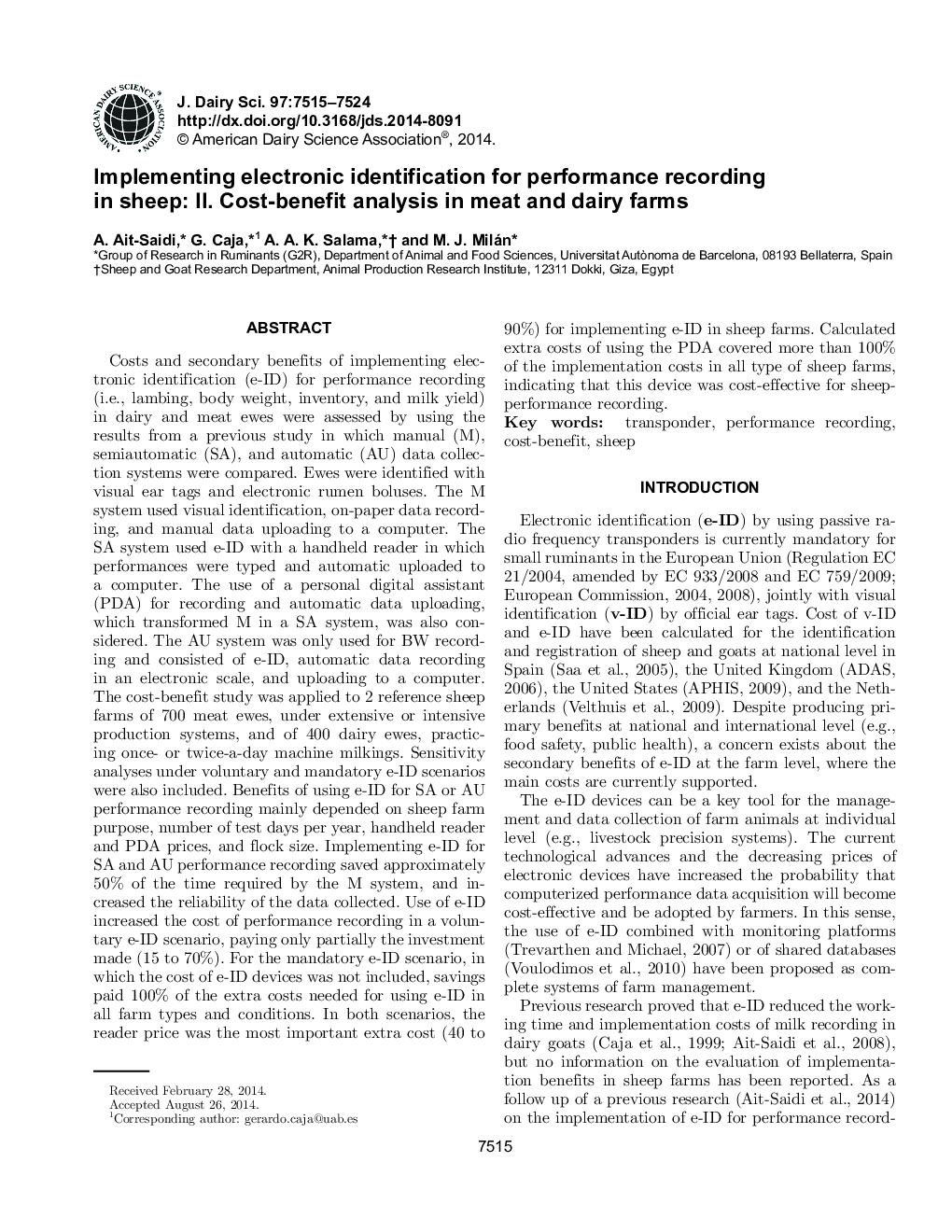| Article ID | Journal | Published Year | Pages | File Type |
|---|---|---|---|---|
| 10973469 | Journal of Dairy Science | 2014 | 10 Pages |
Abstract
Costs and secondary benefits of implementing electronic identification (e-ID) for performance recording (i.e., lambing, body weight, inventory, and milk yield) in dairy and meat ewes were assessed by using the results from a previous study in which manual (M), semiautomatic (SA), and automatic (AU) data collection systems were compared. Ewes were identified with visual ear tags and electronic rumen boluses. The M system used visual identification, on-paper data recording, and manual data uploading to a computer. The SA system used e-ID with a handheld reader in which performances were typed and automatic uploaded to a computer. The use of a personal digital assistant (PDA) for recording and automatic data uploading, which transformed M in a SA system, was also considered. The AU system was only used for BW recording and consisted of e-ID, automatic data recording in an electronic scale, and uploading to a computer. The cost-benefit study was applied to 2 reference sheep farms of 700 meat ewes, under extensive or intensive production systems, and of 400 dairy ewes, practicing once- or twice-a-day machine milkings. Sensitivity analyses under voluntary and mandatory e-ID scenarios were also included. Benefits of using e-ID for SA or AU performance recording mainly depended on sheep farm purpose, number of test days per year, handheld reader and PDA prices, and flock size. Implementing e-ID for SA and AU performance recording saved approximately 50% of the time required by the M system, and increased the reliability of the data collected. Use of e-ID increased the cost of performance recording in a voluntary e-ID scenario, paying only partially the investment made (15 to 70%). For the mandatory e-ID scenario, in which the cost of e-ID devices was not included, savings paid 100% of the extra costs needed for using e-ID in all farm types and conditions. In both scenarios, the reader price was the most important extra cost (40 to 90%) for implementing e-ID in sheep farms. Calculated extra costs of using the PDA covered more than 100% of the implementation costs in all type of sheep farms, indicating that this device was cost-effective for sheep-performance recording.
Keywords
Related Topics
Life Sciences
Agricultural and Biological Sciences
Animal Science and Zoology
Authors
A. Ait-Saidi, G. Caja, A.A.K. Salama, M.J. Milán,
